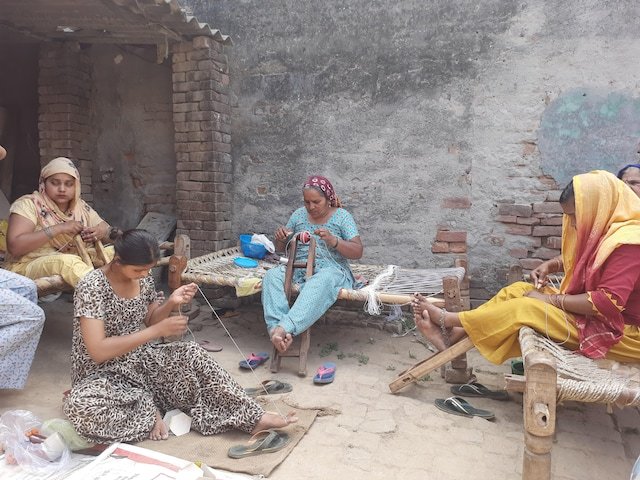Self-help groups of women who weave success stories thread by thread
In Noornagar village in neighboring Muzaffarnagar district, some women alleged that government schemes are not reaching them
As dusk quickly fell over the horizon, a group of ten women in Jangethi village near Meerut quickly huddled together. With handmade baskets in hand, which they had woven after a day of hard work, they began to negotiate for a decent price.
And all this while they were also weaving something else: plans for how to spend their first earnings.
“We will buy offerings for our gods and delicacies for children from the first payment,” said one of them, while others nodded happily.
Eco Roots Foundation, a non-governmental organization working towards environmental conservation, has formed a group of 20 to 25 women in the village to make eco-friendly handicrafts.
Babita, the pack leader, was busy negotiating the price with Vikram, the NGO’s coordinator for Uttar Pradesh.
“You know the market price… you tell the right price for what we have made,” Babita insisted.
The work involves the extraction of water hyacinth from local water bodies, which are then cleaned and dried. The entire process takes fifteen days, the women explained.

“We then weave and make items such as baskets and placemats,” says Vineeta.
After a short training by the organization, the women started work in February. Others came along later.
“Two women approached me and asked if I wanted to join,” said 62-year-old Rajesh excitedly.
But there were also challenges.
“People were taunting us while we were cleaning the ponds for the material. But we kept trying,” Monika remembers.
The Bharatiya Janata Party (BJP) manifesto, released last week, promised to facilitate women’s participation in the workforce. It also promised to empower rural women of three crore from one crore at present to become Lakhpati Didis.
Another group of women in the same village specializes in sewing leather balls, a tradition passed down from generation to generation.
“My mother made these balls about 25 years ago,” says 23-year-old Shalu.
Sitting in the sunlight on a camp bed, three women were sewing leather balls on the equator. Another looks on with enthusiasm: she wants to learn.
Urmila, with two decades of experience, said they get Rs 30 for stitching a ball. “Depending on how many balls we complete in a day, we get the total amount every Sunday.”
Uttar Pradesh has 848,810 such self-help groups with 9,580,275 members.
According to the Ministry of Rural Development, there is a potential of 438,590 Lakhpati Didis in the state.
Of the 1.2 crore self-help groups (SHGs) in the country, 88 percent are women’s groups, according to the Economic Survey 2022-23.
But in Noornagar village in neighboring Muzaffarnagar district, some women alleged that government schemes are not reaching them.
“We work in the fields when there is a need,” said one of them. The daily wage is Rs 250 but is not delivered on time, she added.
Both my daughters have gone to the field and have not returned yet, said 30-year-old Shalini (name changed).
“If the government can provide work, which we can do from our homes, it will be helpful,” the women said.
But there is hope for the future.
The female labor force participation rate (LFPR) rose to 10.3 percent in 2023-24, up from 8.7 percent the previous year. The LFPR for women in rural areas increased from 9.7 percent to 10.8 percent during the same period, according to data from the Center for Monitoring Indian Economy (CMIE).
First print: April 17, 2024 | 6:48 PM IST
